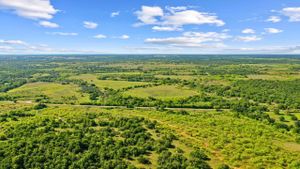Mount Saint Vincent University (MSVU) has taken significant strides toward acknowledging and integrating Indigenous perspectives within the tourism sector. This effort came to fruition with the launch of the Kinu Tourism Project, which aims to empower Indigenous students through education and practical work opportunities. The name "Kinu," meaning "Us together," reflects the program's goal of fostering inclusive environments within the broader tourism industry.
The project officially launched with the arrival of nine Indigenous students this September. This cohort marks the beginning of what many hope will be an important step toward revitalizing and recognizing Indigenous tourism practices. The university celebrated this milestone with events emphasizing Mi'kmaw culture, featuring traditional dances performed by dancers Noel Julian and Jesse Benjamin, as well as drumming by the group Sacred Flight, which included students from the Kinu initiative.
Gabriel Robitaille, who hails from the Paqtnkek First Nation and is one of the students enrolled, expressed his enthusiasm for the program, noting how it connects him with influential Indigenous leaders. "It's empowering for me to have these mentors and role models to move forward," he said, highlighting the importance of having access to resources and support within the program.
The Kinu Tourism Project is not just another initiative; it involves the careful crafting of course material to include Indigenous knowledge and traditions. This was made possible by the work of the Indigenous Advisory Committee, which brought together professionals, educators, and elders from across Mi'kma’ki, the traditional territory of the Mi'kmaq people. Through this collaborative approach, MSVU aims to tailor its offerings to meet the unique needs of Indigenous communities, enhancing tourism education.
Bradley Paul, who is also Mi'kmaw and serves as the project coordinator for Kinu, expressed his gratitude for the collaborative spirit of the project. He noted the necessity of developing relationships with local communities to truly understand and support their tourism needs. "To be part of this project and to see the change is pretty amazing," Paul remarked, emphasizing the cultural shifts occurring within the university itself.
The curriculum developed under the Kinu Project is multi-faceted, providing options for students through various pathways, including one-year certificates, two-year diplomas, and four-year degree programs. One standout requirement of the program is the mandatory course titled "Introduction to Mi'kmaw and Indigenous Tourism," which aims to equip all students with culturally relevant knowledge they'll find beneficial when working within Indigenous territories.
Jennifer Guy, the assistant professor leading the program, highlighted the project as a community-led response to the growing demand for Indigenous tourism education. With over 300 hours of original course content, it integrates Indigenous perspectives seamlessly with traditional tourism curricula, focusing on creating future tourism professionals who are cognizant of, and respect, the cultural heritage of the areas they represent and work within.
Launching such initiatives marks not just educational progress, but also speaks volumes about the wider recognition and respect of Indigenous cultures and contributions to tourism. The Kinu Tourism Project at MSVU stands as a beacon of hope toward creating equity and opportunity for Indigenous students through education, resilience, and strong connections to their communities.



